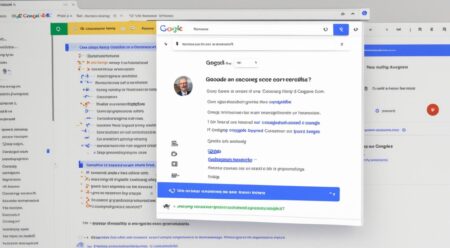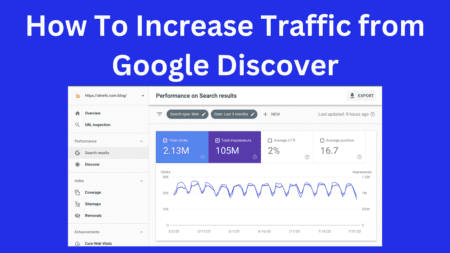Are you looking to maximize the visibility of your blog posts on Google Discover? With its vast user base and ability to drive significant traffic, Google Discover has become a valuable platform for content creators. By following a few optimization techniques, you can improve the chances of your blog posts appearing on Google Discover and reaching a broader audience.
In this article, we’ll explore five steps you can take to optimize your blog posts for Google Discover and boost your online presence.
Table of Contents
- Step 1: Understanding Google Discover
- Step 2: Create High-Quality and Engaging Content
- Step 3: Focus on Visual Appeal
- Step 4: Leverage Structured Data
- Step 5: Optimize for Mobile
Step 1: Understanding Google Discover
Before diving into the optimization process, it’s essential to understand what Google Discover is and how it works. Google Discover is a personalized content feed that displays a collection of articles, news, videos, and other relevant content to users based on their search history and interests. It aims to provide users with valuable information and content they might be interested in, even before they search for it.
Google Discover is accessible through the Google app on mobile devices, the Google homepage on mobile browsers, and the Google Discover feed on some Android devices. It is a powerful tool for content creators to expand their reach and drive organic traffic to their blog posts.
Step 2: Create High-Quality and Engaging Content
The foundation of any successful optimization strategy is high-quality and engaging content. Google Discover values content that is informative, well-written, and relevant to users’ interests. To optimize your blog posts, focus on the following:
- Research your target audience and understand their preferences.
- Create comprehensive and well-structured articles that provide value.
- Use engaging headlines and compelling introductions to capture users’ attention.
- Incorporate relevant images, videos, and infographics to enhance the visual appeal.
- Write in a conversational tone and ensure your content is easy to read and understand.
By consistently producing high-quality and engaging content, you increase the chances of your blog posts appearing on Google Discover and attracting a larger audience.
Step 3: Focus on Visual Appeal
Visual content plays a crucial role in attracting users’ attention and making your blog posts more shareable. When optimizing for Google Discover, consider the following visual elements:
- Include high-resolution images that are relevant to your content.
- Create eye-catching graphics and infographics that summarize key information.
- Optimize your images by compressing them for faster loading times.
- Use descriptive alt text for images to improve accessibility and SEO.
By incorporating visually appealing elements, you can make your blog posts stand out in the Google Discover feed and increase the likelihood of users clicking on your content.
Step 4: Leverage Structured Data
Structured data helps search engines understand the context and content of your blog posts better. By implementing structured data markup, you provide additional information that can enhance the visibility of your content on Google Discover. Consider the following:
- Use structured data formats like JSON-LD or microdata to annotate your content.
- Include relevant schema markup, such as article, blog posting, or review markup.
- Highlight key details like the headline, publication date, author, and featured image.
- Ensure your structured data is accurate, up-to-date, and aligned with Google’s guidelines.
By leveraging structured data, you improve the chances of your blog posts appearing in the Google Discover feed, especially for users interested in specific topics or niches.
Step 5: Optimize for Mobile
As mobile usage continues to rise, it is crucial to optimize your blog posts for mobile devices. Google Discover primarily caters to mobile users, and ensuring your content is mobile-friendly is essential. Consider the following mobile optimization practices:
- Choose a responsive design that adapts to different screen sizes.
- Optimize your page loading speed by compressing images and minimizing code.
- Use legible fonts and appropriate font sizes for easy reading on mobile screens.
- Create a seamless user experience by using intuitive navigation and clear call-to-action buttons.
By prioritizing mobile optimization, you enhance the user experience and increase the likelihood of your blog posts appearing in Google Discover for mobile users.
Questions and Answers
Q: Can I optimize my existing blog posts for Google Discover?
A: Yes, you can optimize your existing blog posts for Google Discover. Review each post and implement the optimization steps mentioned in this article, such as creating engaging content, improving visual appeal, leveraging structured data, and optimizing for mobile.
Q: How long does it take for blog posts to appear on Google Discover?
A: The time it takes for your blog posts to appear on Google Discover varies. It depends on factors like the relevance of your content, user engagement, and the recency of your posts. By consistently following optimization best practices, you increase the chances of your posts appearing sooner.
Q: Can I track the performance of my blog posts on Google Discover?
A: Yes, you can track the performance of your blog posts on Google Discover using tools like Google Search Console and Google Analytics. These tools provide insights into the visibility, clicks, and impressions of your content in Google Discover.
Q: Does Google Discover prioritize certain types of content?
A: Google Discover aims to provide a diverse range of content to its users. It considers various factors, such as users’ interests, search history, and location, to display relevant content. By creating high-quality and valuable content, you improve the chances of your blog posts appearing on Google Discover, regardless of the type of content.
Q: Should I optimize my blog posts solely for Google Discover?
A: While optimizing your blog posts for Google Discover is beneficial, it’s essential to have a holistic approach to SEO. Focus on creating high-quality content, improving user experience, and implementing other SEO best practices to attract organic traffic from various sources, including search engines, social media, and referrals.
Conclusion
Optimizing your blog posts for Google Discover can significantly expand your reach and attract a larger audience. By following the five steps outlined in this article—understanding Google Discover, creating high-quality content, focusing on visual appeal, leveraging structured data, and optimizing for mobile—you enhance the visibility and chances of your blog posts appearing on Google Discover. Remember to stay consistent, monitor your performance, and adapt your optimization strategies as needed to ensure long-term success in reaching your target audience through Google Discover.
© copyright 2019 – all rights are saved












1 Comment
Wow, marvelous blog layout! How lengthy have you been running a
blog for? you make blogging look easy. The entire glance of your site is great,
let alone the content material! You can see similar here sklep online